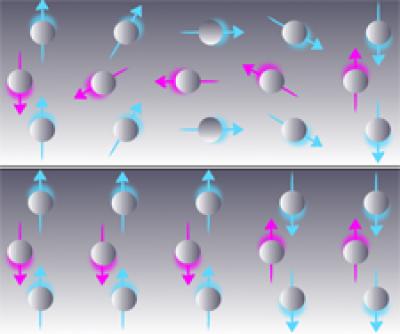Normally, matter can be either magnetic or electrically polarized, but not both at the same time. Now, researchers at the University of Copenhagen in Denmark have discovered a material that can be both magnetic and electrically polarized
Dr. Nachmani Moshe

Normally, matter can be either magnetic or electrically polarized, but not both at the same time. Now, researchers at the University of Copenhagen in Denmark have discovered a material that can be both magnetic and electrically polarized. The innovative material opens a window to a multitude of new possibilities, for example - in the development of sensors in the technology fields of the future. The research findings were published in the prestigious journal Nature Materials.
Materials capable of being both magnetic and electrically polarized, and which may include additional properties, are called "multiferroics" (The entry in Wikipedia), that is - have more than one magnetic property, and were previously discovered by Russian researchers in the sixties of the last century. However, at that time the appropriate technology for testing these materials did not exist. Only now, in recent years, have researchers begun to focus again on testing the properties of these materials. Today there are research facilities capable of analyzing the materials down to their atomic level.
"We studied the iron compound TbFeO3, which is a rare compound that occurs in nature, with the help of powerful neutron radiation in a magnetic field, when the temperature was cooled almost to absolute zero - minus 271 Celsius. We were able to identify that the atoms in the material are arranged in a consistent lattice structure consisting of rows of the heavy metal terbium atoms separated by iron atoms and oxygen atoms. Such lattices are known in science, but their magnetic complexes are new. Normally, the magnetic complexes are found in a jumble, but we discovered that in this material the complexes are located in a straight line, like an arrow, and the distances between them are equal. We were completely shocked when we saw this," explains researcher Kim Lefmann, a professor at the Center for Nanoscience at the University of Copenhagen.
"The computer models describe a situation where the terbium walls react with each other by exchanging spin waves (magnetism) between them, a magnetism that is transferred with the help of the magnetic iron lattice. The result is a force similar to the Yukawa force known from the field of particle physics and nuclear physics. That is, the material has the same forces that hold together the particles in the atomic nucleus," explains one of the researchers.
It is precisely this interaction between the transition metal, iron, and the rare element terbium, which plays an important role in this magneto-electric material. The spin waves of the terbium atoms cause a significant increase in the electrical polarization and the interactions between the ions and the elements give rise to one of the strongest electro-electrical effects ever observed in materials.
